With such a wide-range of things to do in Peru—from adrenaline-pumping adventure to rich cultural experiences—it can all be a little overwhelming trying to plan what are the must-sees. With the help of our friend and fellow travel blogger, we’ve come up with the ultimate round up of the best things to do in Peru.
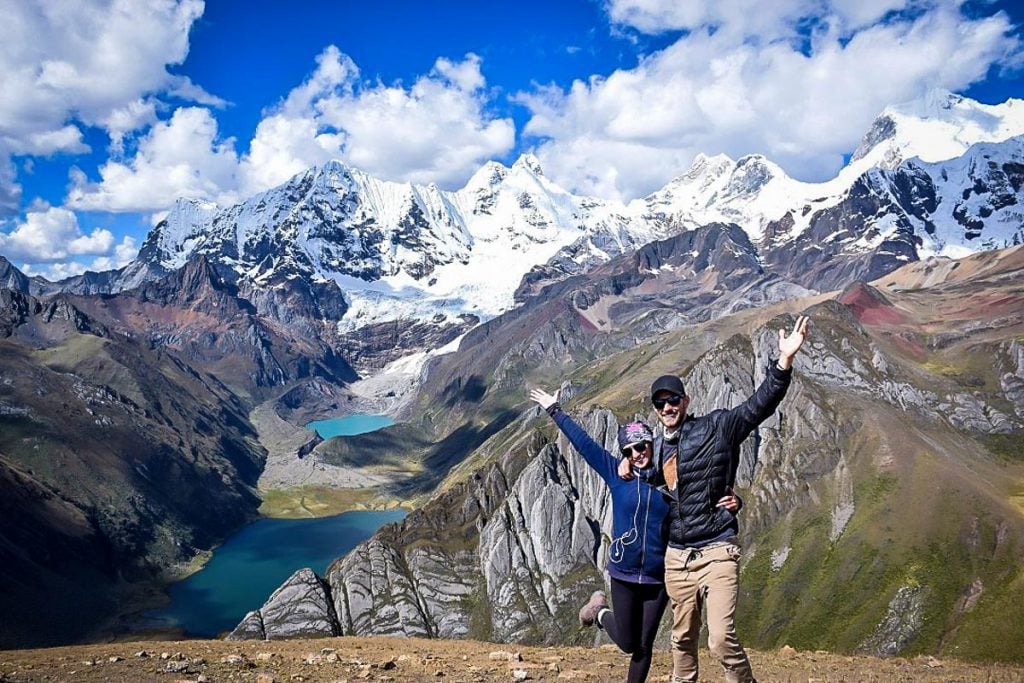
Co-written by guest author Daniel Caracciolo from Destinationless Travel
With its diverse land and rich culture, Peru is the perfect country to travel. You can go hiking on a mountain more than 5,000 meters above sea level and a couple days later, you can swim with sea turtles in the ocean. You can explore modern cities, like Lima, as well as traditional villages that see few foreigners.
There are the must-do things every traveler puts on their Peru itinerary, like visiting Machu Picchu. And then there are the places in Peru that are off the beaten path, which most tourists never see.
While such a wide range of things to do in Peru is guaranteed to keep you entertained and busy, it can all be a little overwhelming when planning where to go in this massively diverse country.
That’s where we come in! With the help of our friend and fellow travel blogger, Daniel, we’ve rounded up the best things to do in Peru. With the information in this article, you can easily plan your first visit to this country that will surely entice you to come back for more!
Peru Travel Guide
For more tips and advice for planning your trip to Peru, jump to the following sections (or just keep scrolling to see it all!).
Top things to do in Peru
If you’re looking for the very best things to do in Peru, here are our top recommendations:
- Hike the Inca Trail to Machu Picchu
- Go trekking in Cordillera Blanca
- Explore Cusco
- Ride a dune buggy in Huacachina
- See the condors in Colca Canyon
Keep reading for more detailed information on each of these things and more ideas of fun things to do in Peru.
1. Hike the Inca Trail to Machu Picchu
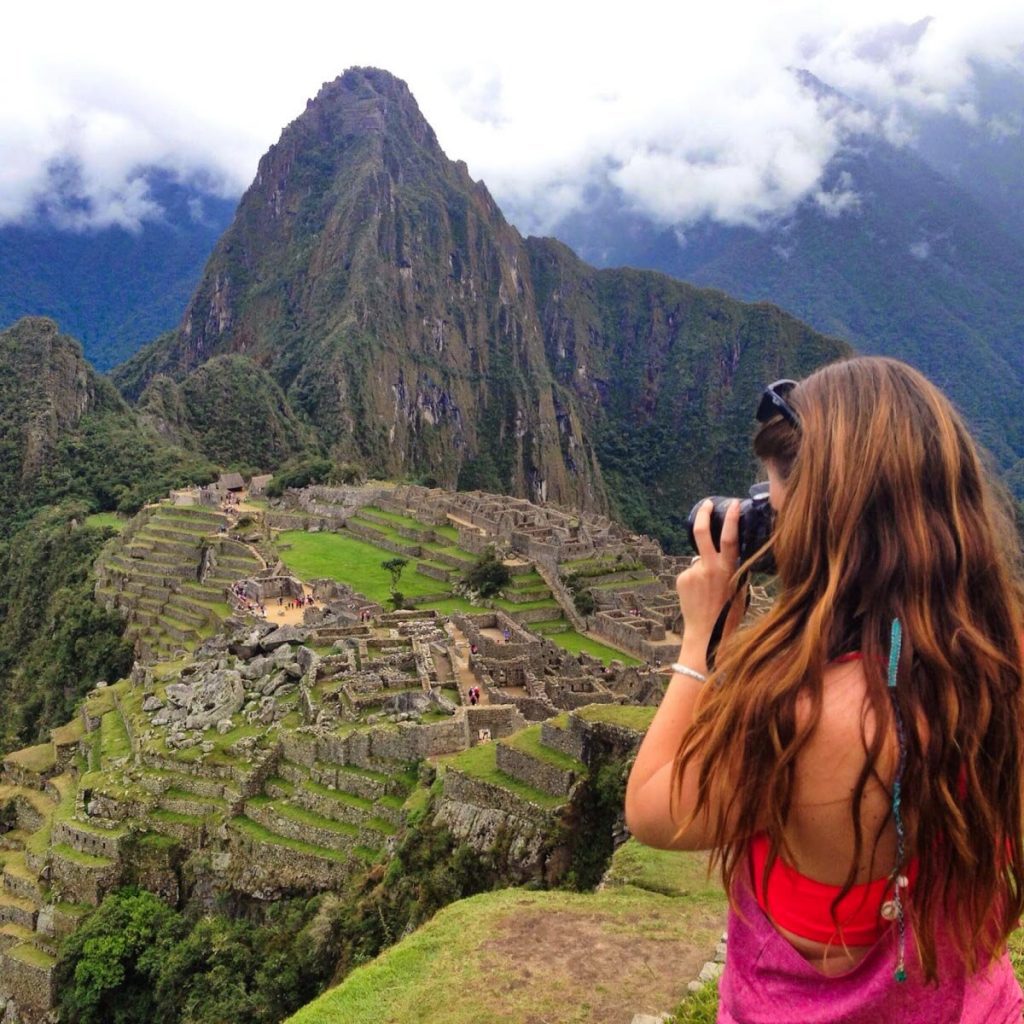
It goes without saying that no trip to Peru would be complete without a visit to Machu Picchu. This Inca ruin is the most popular attraction in Peru—and likely South America. During the peak season, 5,000 visitors enter the Inca Ruin every day and that number is seeing no signs of receding.
We think Machu Picchu is truly worth all the hype. Gazing down upon the ruins as the sun rises over the surrounding mountains is an awe-inspiring event.
The best way to get to Machu Picchu is to follow in the footsteps of the Incas by making the 4-day pilgrimage on the Inca Trail.
The trek is a strenuous one, involving high-altitude and lots of elevation gain (particularly on day 2), but can be achieved by anyone with a reasonable level of fitness who’s acclimated to the altitude in Cusco beforehand.
Because of the popularity of this trail and concerns for overuse, the Peruvian government has placed strict regulations on the number of tourists permitted to hike the Inca Trail each year, as well as the companies that are allowed to provide tours.
As a result, booking your Inca Trail trek well in advance (typically 6 months) is absolutely mandatory and tours can fill up fast during high season.
We have an entire guide to hiking the Inca Trail to Machu Picchu that goes over everything you need to know to plan your trek. We’ll also cover some alternative treks to get to Machu Picchu (that don’t require such advanced planning!).
Inca Trail to Machu Picchu Hike: Ultimate Guide
Hiking the Inca Trail to Machu Picchu is one of the most incredible experiences of my life. Follow along as we describe how to book your Inca Trail tour, what to expect on the trail, what to pack, and what you need to know for your trek.
Psst! Looking for other ways to visit Machu Picchu that don’t include trekking? We put together a detailed guide on how to get to Machu Picchu on your own that breaks down the complicated ticketing process, travel logistics and other important info.
2. Go trekking in Cordillera Blanca
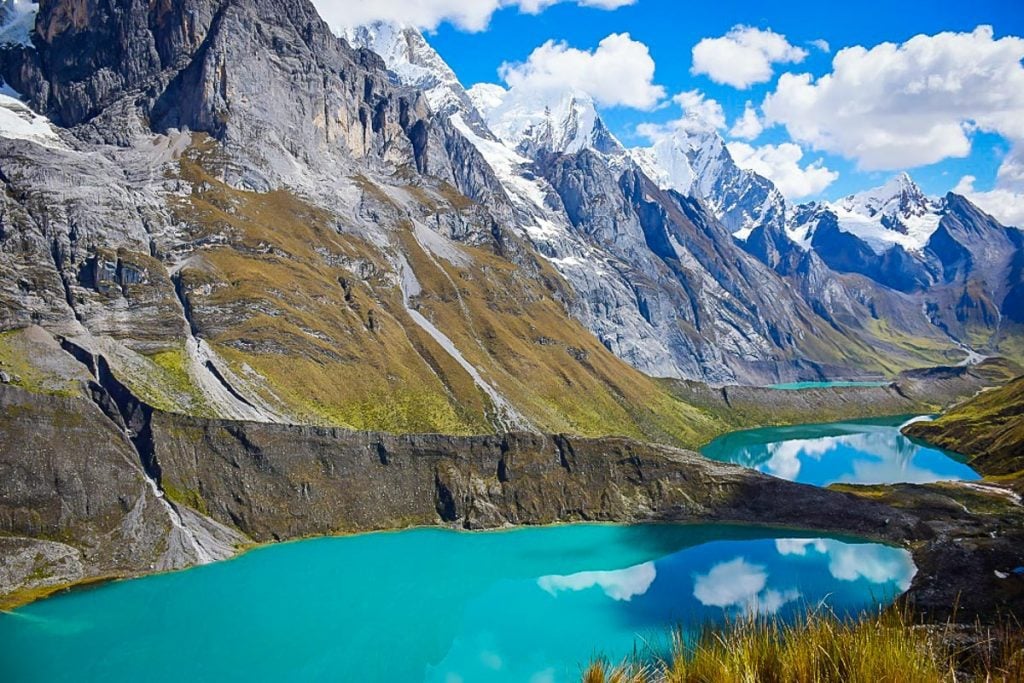
Recommended by Daniel
The Cordillera Blanca or “White Range” in English is one of the most spectacular places to hike in Peru. This mountain range consists of 80 mountain peaks including 15 over 6,000 meters (19,685 ft).
The most popular hike in the region is the 4-day Santa Cruz trek. This trek is home to some of the most breathtaking views in the world including a glimpse at a mountain that is rumored to be the peaks the Paramount Pictures logo is modeled after.
Aside from the Santa Cruz trek, there are many other hikes such as the 1-day Laguna 69 or the more challenging 8-12 day Huayhuash Trek.
During our visit to the region, we completed both the Huayhuash and the Laguna 69 trails. We battled altitude sickness and long days of hiking, but in the end were rewarded with an experience that will last a lifetime!
Although this region is quite remote, one small town holds the key to visiting this beautiful place. Huaraz, Peru is located 10 hours by bus from Lima. Despite the magnificent views on offer, the town is usually filled with locals from surrounding villages as opposed to international tourists.
The small number who do make it are typically your more adventure-seeking visitors making Huaraz and the Cordillera Blanca one of the our top off-the-beaten-path things to do in Peru.
We wrote an entire guide to exploring Cordillera Blanca with everything you need to know to plan an epic trek (or 2!).
Cordillera Blanca: Peru’s Most Underrated Travel Destination
The Cordillera Blanca is a well-kept secret, and the hiking in this region of the Andes Mountains is known as some of the best in the world. Come along as guest author, Daniel Caracciolo, takes you through his journey to Huaraz and a place he describes as the “most underrated place in South America”.
3. See the condors in Colca Canyon
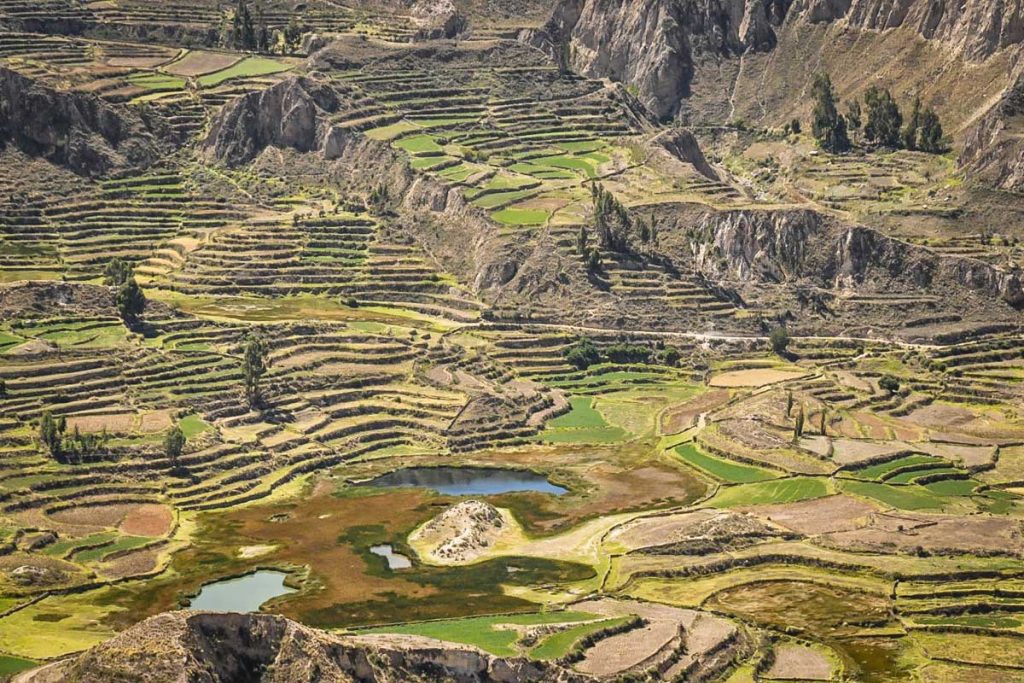
Most people have heard of the Grand Canyon in the U.S., but did you know the deepest Canyon in the world is in Peru? Probably not, and to be honest, neither had we until we arrived in Peru.
The Colca Canyon is located near the southern city of Arequipa. The impressive canyon features several hiking trails, some very picturesque hot springs, and my favorite of all – lots of Condors!
Condors are one of the largest birds in the world. In the Colca Canyon, they visit the same cliff face every day in numbers you won’t see anywhere else.
If you have ever wanted to see these majestic birds up close, then visiting the Colca Canyon should absolutely be one of your top things to do in Peru.
The canyon itself can be hiked on guided tours or by yourself and most hikes are only a few days. Be warned though, hiking into the deepest canyon in the world means a long steep hike back out! If the hike doesn’t sound appealing to you, then a quick day-trip to the condor lookout point is well worth it.
We put together a guide to hiking the Colca Canyon Peru detailing our experience and all the different ways you can visit this majestic place.
Colca Canyon Peru Trekking Guide
The Colca Canyon is located in southern Peru and is the second deepest canyon in the world. Here’s everything you need to know to do the Colca Canyon Peru trek, either on your own or with a guided tour.
4. Visit historic Arequipa
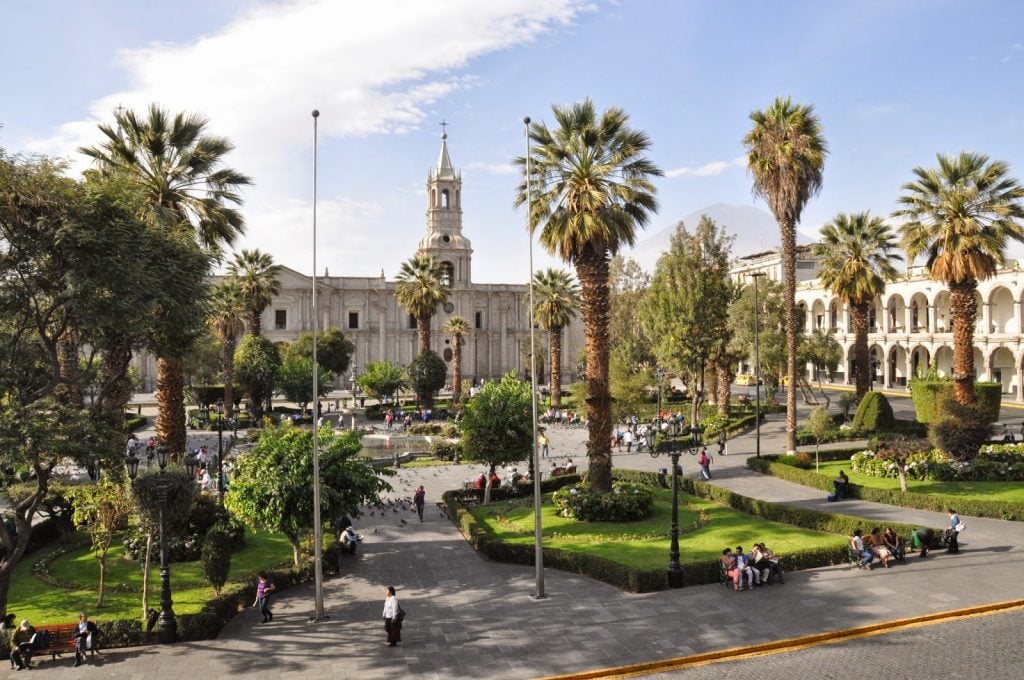
Arequipa is simply stunning! It’s nicknamed “La Ciudad Blanca” or “the white city” because much of the city center was constructed of sillar, a type of white volcanic rock.
Some of the most impressive buildings are located in the main square, Plaza de Armas, with the most spectacular being the Basilica Cathedral. However, a short venture from the main square it is possible to find even more impressive architecture.
Hint: Many cute back streets are hidden behind large wooden colonial doors despite being public areas.
Arequipa is not only a beautiful city to visit, it’s also a gateway to Peru’s southern region. It’s the closest city to the Colca Canyon and surrounding volcanoes which makes it a great jumping off point for the treks.
We put together a complete guide to Arequipa Peru, including all the best things to do and where to stay when you’re there.
Fun Things to Do in Arequipa, Peru
Arequipa, known as the White City, is the largest—and arguably the most beautiful—colonial city in Peru. With unique, Euro-influenced architecture and historic street corners, you’re bound to be drawn to explore all the best things to do in Arequipa’s corners.
5. Explore Cusco
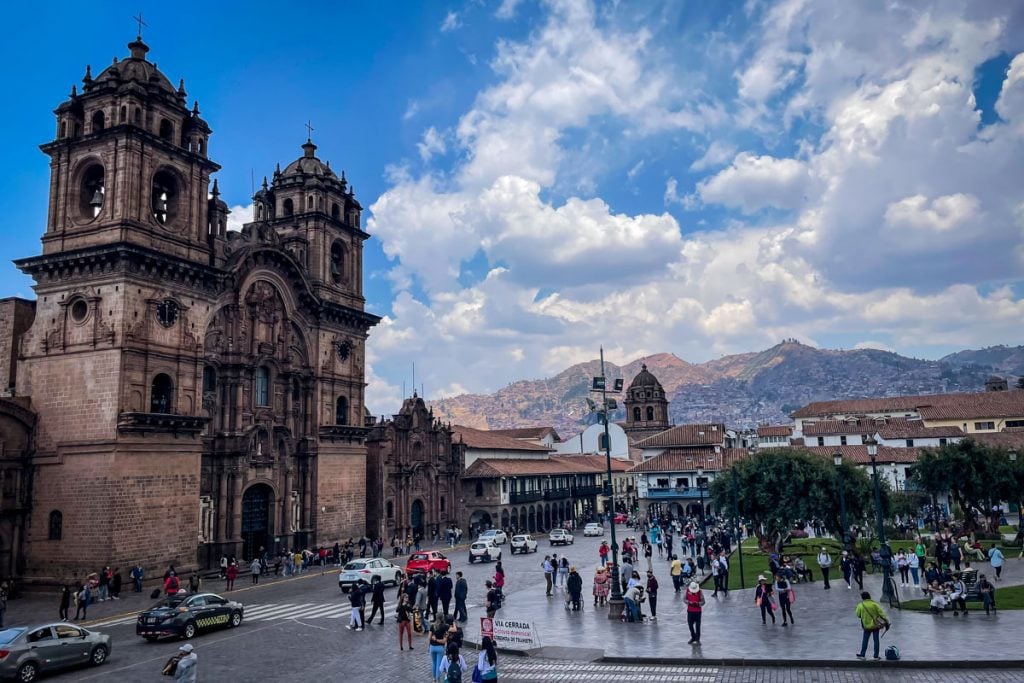
Few cities in the world are as iconic as Cusco. Once the capital of the Inca Empire, Cusco is more famously known as the gateway to Machu Picchu.
During the summer months in the North Hemisphere, the city is filled with visitors preparing to hike Machu Picchu. But that’s not the only reason to visit this impressive city.
The Plaza de Armas is one of the most impressive main squares in South America. Wandering the streets and ducking into shops and restaurants is a great way to spend a day.
Situated at over 3,000m (11,152 ft to be exact) above sea level, you won’t be going anywhere in a hurry. Just walking the streets in Cusco will have you out of breath. Give yourself a few days here to acclimate before attempting any hiking in the region.
Cusco also makes a great base for exploring many of the other things to do in Peru on this list.
Be sure to check out our guide to the most exciting things to do in Cusco as you plan your trip to this unique Peruvian city.
Exciting Things to Do in Cusco, Peru
Cusco is a city bursting with life. There’s both a large presence of foreigners (mostly on their way to Machu Picchu) and locals going about their daily life. It’s a city with such a rich history that is worth more time than just a stop before the Inca Trail; there are so many things to do in Cusco, Peru.
Psst! Will you be traveling from Lima? There are several options for transportation between the two cities, and we have a detailed guide on how to travel from Lima to Cusco which outlines all of your options.
6. Hike the off-the-beaten-path Palccoyo Rainbow Mountain
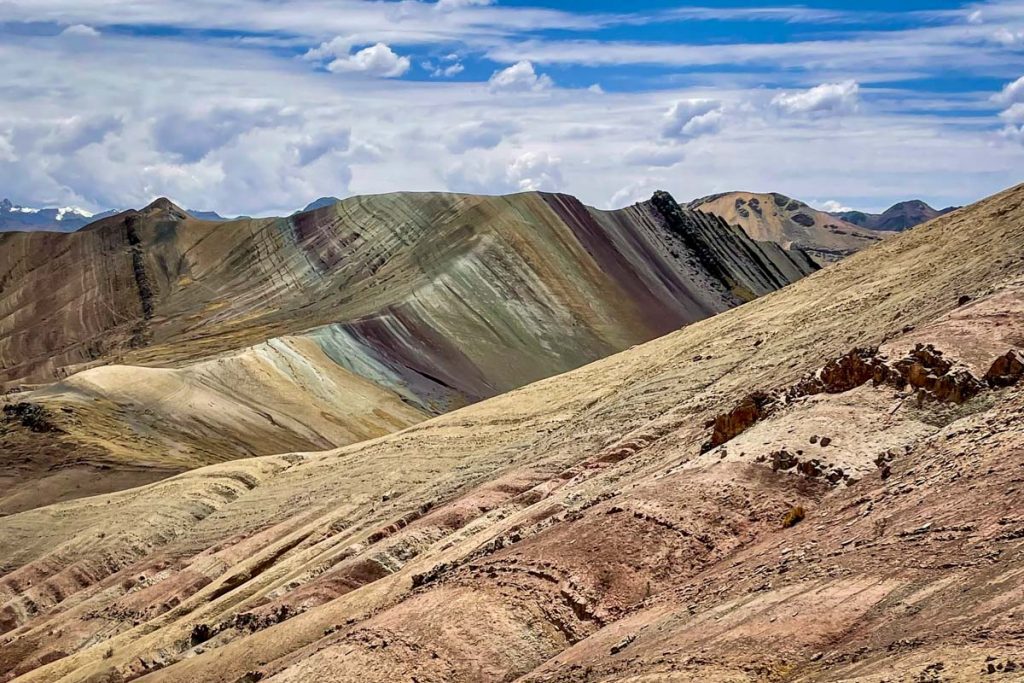
It wasn’t until 2015 that Rainbow Mountain (Vinicunca) was discovered near Cusco. As images of this colorful mountain started popping up on social media, its popularity grew… and it hasn’t slowed down since.
Nowadays a trip to Rainbow Mountain is high on the list of most visitors to Peru. However, with its ever-growing popularity comes overtourism, crowding and a lack-luster experience when shared with up to 4,000 other daily visitors.
Luckily, other rainbow mountains have been discovered that offer the same colorful peaks with significantly less crowds.
Palccoyo Rainbow Mountain offers just that experience, and with a fraction of the daily visitors (we’re talking just 30 people or so per day!) And at 200m below the elevation of Vinicunca with a shorter hike, it’s actually more accessible to someone worried about struggling with the altitude.
We’ve outlined all of your options for visiting one of the colorful peaks in our guide to Rainbow Mountain Peru. We include descriptions of both the original (Vinicunca) Rainbow Mountain as well as the alternative (Palccoyo) and the differences between the two experiences (with photos!).
Rainbow Mountain Peru: How to Get There & What to Expect
The stratified sandstone layers of Rainbow Mountain in Peru have captured the curiosity of travelers in only six short years of being revealed. We put together a detailed guide of both Vinicunca and Palccoyo rainbow mountains to help you plan your trip to either of these spectacular sites in Peru.
7. Ride a dune buggy in Huacachina
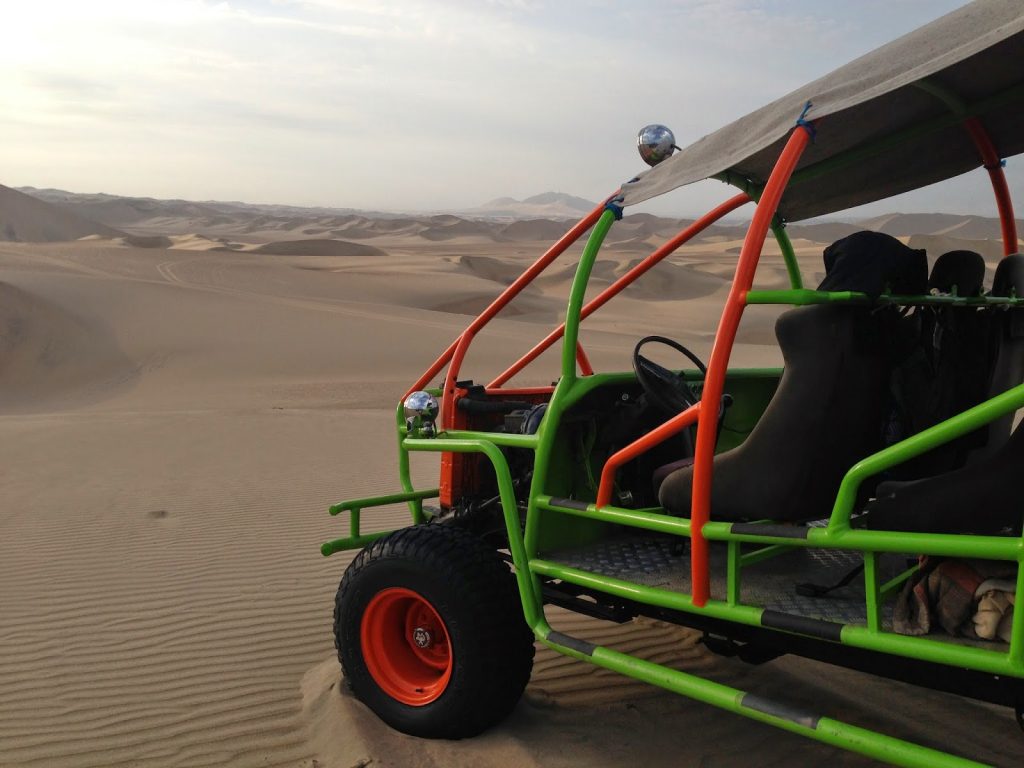
Huacachina is a small town just inland from the coast of Peru, surrounding a small oasis in the Ica Desert. Nestled amongst the largest sand dunes in South America, the town is unlike any place else you’ve ever seen.
Once a haven for the wealthiest Peruvians, who would swim in the lake for its “healing powers,” Huacachina is now a paradise for backpackers and adventure activities.
The quintessential Huacachina experience is zipping through the desert in a dune buggy. The adrenaline-inducing ride is best experienced at sunset, so you can watch the golden rays disappear behind the dunes after attempting sandboarding (think snowboarding, but on sand) for your first time.
Of course, we have a guide with all the best things to do in Huacachina for those looking for a little adventure.
Adventurous Things to Do in Huacachina, Peru
This tiny oasis in the Ica desert is a stop on most backpackers’ itineraries. In this guide to Huacachina, Peru, we cover the best things to do, where to stay, and how to make the most out of your visit.
8. Visit Lima’s many neighborhoods
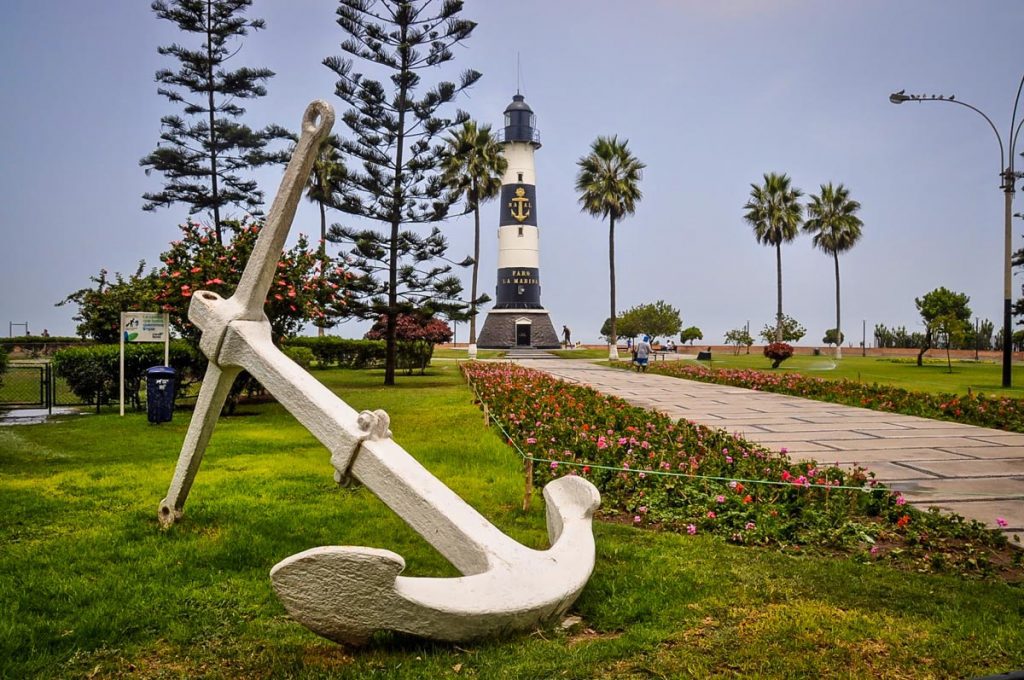
As the capital of Peru and home to 30% of the population, it’s no surprise there are plenty of exciting things to do in Lima.
Unlike many cities, the most popular place for visitors to stay is not in downtown and instead the wealthier neighborhood of Miraflores or hip and artsy Barranco. Miraflores is a beautiful suburb located on the coast and is near the main surfing beaches, and Barranco is just to the south.
The coastal neighborhoods are stunning and there are plenty of shops and restaurants that could please any visitor. However, to get in touch with Lima’s history you will need to venture downtown.
The central downtown area is where you will find all of Lima’s colonial history. The streets surrounding the Plaza Mayor are filled with colonial architecture, museums and basilicas. And—just as you would imagine a city of 11 million—they are busy.
One great thing about downtown Lima is the prices. Everything in the area is super cheap and finding a tasty bite to eat at a low price is easy. With that said, downtown is not the safest area and wandering around at night might not be a great idea.
Check out our guide to Lima to learn more about the neighborhoods and all the fun things you can do there. Plus, don’t miss the food recommendations! Lima is one of the most food-forward cities in South America and you will want to eat your way through town if you can.
Fun Things to Do in Lima, Peru
The bustling capital city of Peru is a blend of cultures, coastal vibes and metropolitan cityscape. We’ve visited a couple of times and put together this list of exciting things to do in Lima Peru to help you plan your trip.
9. Discover the Sacred Valley
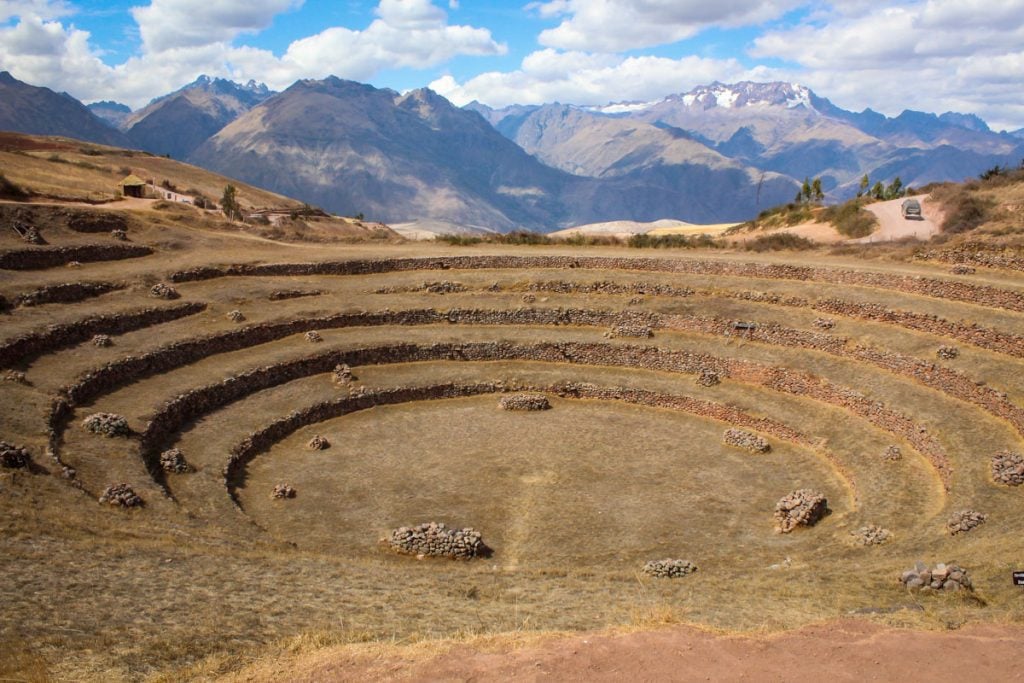
Just north of Cusco is a region of the Peruvian Andes known as the Sacred Valley. Stretching from the town of Pisac in the East all the way to Ollantaytambo in the West, the Sacred Valley once served as an important route for the Inca from Cusco to Machu Picchu.
This region, including Cusco and Machu Picchu is considered the heart of the Incan Empire.
Nowadays it’s a popular tourist destination due to the preservation of cultural histories and impressive natural scenery. Highlights of the valley include a handful of cute towns, each with their own colorful markets and personalities, a spotting of ancient ruins, some unique salt mines and a network of hiking trails leading to some pretty epic landscapes.
We put together a complete guide to visiting the Sacred Valley Peru including transportation options and all the fun things to see and do there.
Sacred Valley Peru: Ultimate Guide
The Sacred Valley in Peru is a popular destination due to the preservation of its ancestral cultures and its impressive natural scenery. In this guide to the Sacred Valley, we go over everything you need to know for your visit including the best things to do, when to go, and how to get there.
10. Swim with sea turtles in Mancora
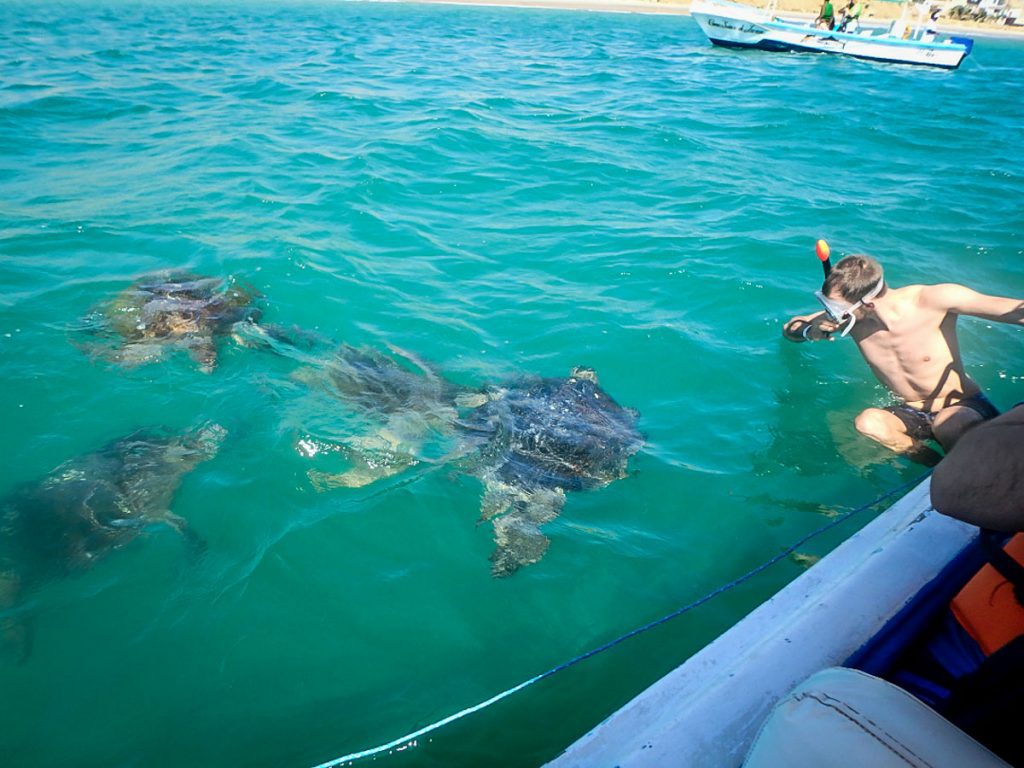
Recommended by Daniel
Hidden just out of reach for most visitors to Peru is the small town of Mancora. Known as a backpacker hotspot, Mancora is popular for its surf and rather vibrant nightlife.
The small beach town carries a laidback lifestyle and is the only place in Peru I saw tuk-tuks (small motorbikes with a carriage for passengers).
To some, a trip to Mancora is just a stopping-off point before or after they cross the Peru-Ecuador border. However, it offers so much more!
Just outside the town lives a giant colony of over 300 sea turtles. These turtles regularly visit the nearby bay in droves and you can go swimming in the water to see them up close. Touching the turtles is (of course!) not allowed, but just being in the water with them is an amazing experience.
Mancora’s chilled vibe and sandy streets are different from any other town I visited in Peru. If you have the time, it’s a worthwhile stop on your way to or from Ecuador.
11. Tour the Amazon Jungle
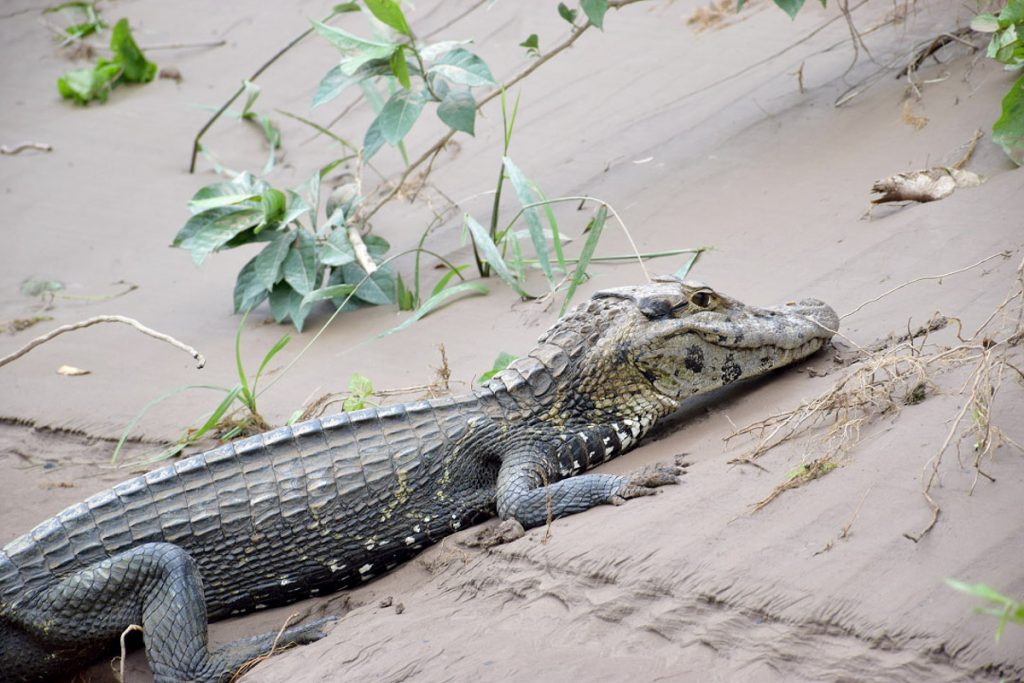
Recommended by Daniel
The Amazon jungle is the largest rainforest in the world and is home to more than half of the world’s animal, bird, and insect species. But of those species, Peru’s Amazon Jungle is the most diverse.
That said, visiting the Amazon from Peru is a must. But with several locations, it can be hard to decide where to go.
For us, it was the remote city of Puerto Maldonado, located near the Brazilian border in eastern Peru. To access the few eco lodges in this area you must head up the river by boat as no roads enter this town. This makes Puerto Maldonado the gateway to some of the most remote areas of the Amazon.
Getting to Puerto Maldonado involves a 10-hour bus from Cusco. This bus will wind its way up to over 5,000m (16,404 ft) above sea level before descending down to the Amazon Rainforest.
12. Boat around the Ballestas Islands
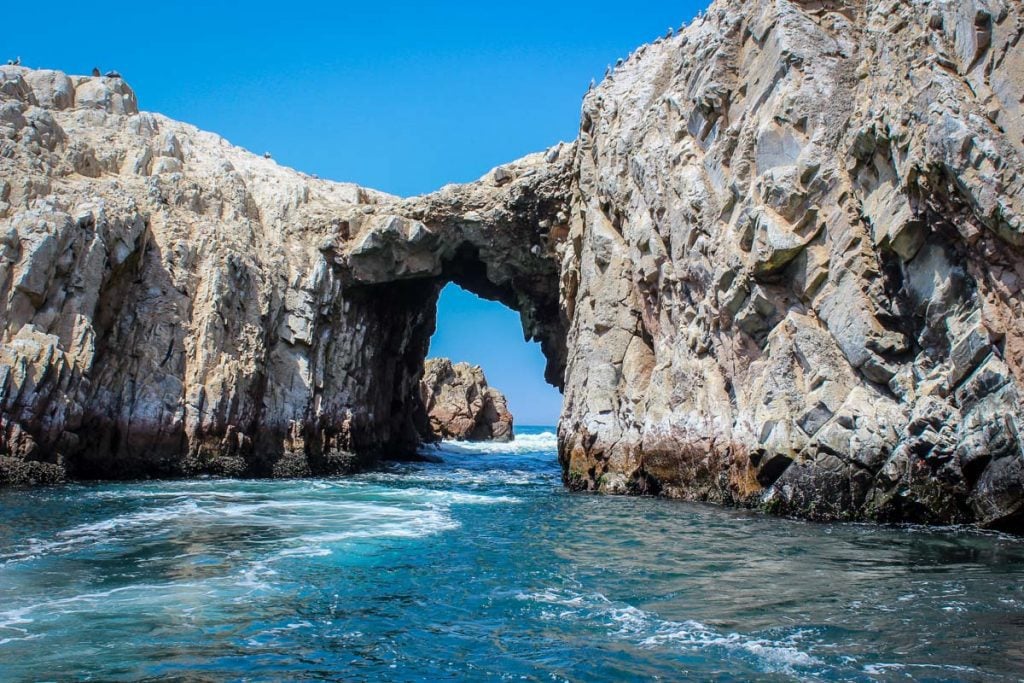
Known as the “Poor Man’s Galapagos,” the Ballestas are a collection of islands that make up an extremely diverse ecosystem on the Peruvian coast.
The islands seem little more than giant rock formations sprouting from the ocean. However, they are home to an impressive array of species including sea lions, Humboldt penguins (yes, there are penguins this far north!), guanays, cormorant, Peruvian boobies, pelicans and more!
Unlike the Galapagos in neighboring Ecuador, the Ballestas can be reached on an affordable speedboat tour from the coastal town of Paracas. There are many local companies that sell tours, just head to the pier and seek them out. The average cost will be about 60 soles (~$15 USD).
13. Fly over the Nazca Lines
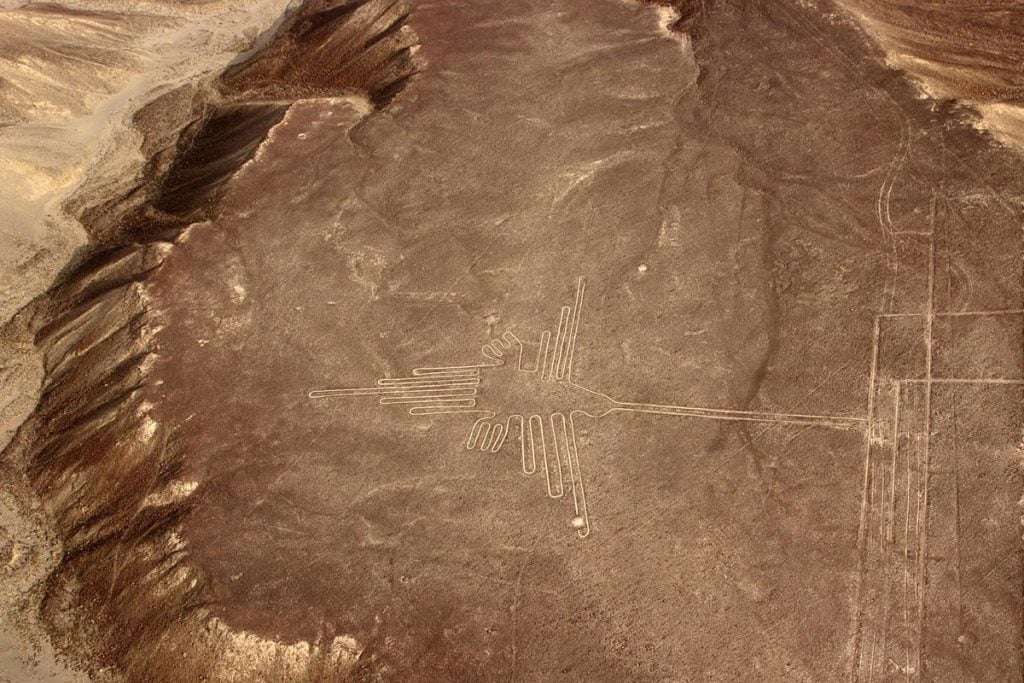
Covering over 350 square miles, the Nazca Lines are a bunch of pre-Columbian era geoglyphs that are etched into the desert landscaping. The lines, which represent different animals and plants, have different theories as to their meaning, but most scholars agree there is a religious significance.
What makes this site so interesting is not only the question of how these glyphs have managed to stay intact for centuries, but also how they got there in the first place. Rumored to have been made by aliens, the site has since been named a UNESCO World Heritage Site.
Because of the scale of these other-worldly designs, they are best seen from above.
There is a small viewing tower next to the main road from Nazca to Ica, but you can only see a few of the lines. You can also venture to nearby hilltops to catch a better glimpse, but the best way to see the Nazca Lines in their entirety is from the air.
You can book a tour from Lima which includes transportation to Nazca and an option for a 30, 40 or 60-minute scenic flight over the lines. The flight includes panoramic windows so you can get great shots while learning more about the significance of the glyphs and how they came to be.
14. Visit the floating islands at Lake Titicaca
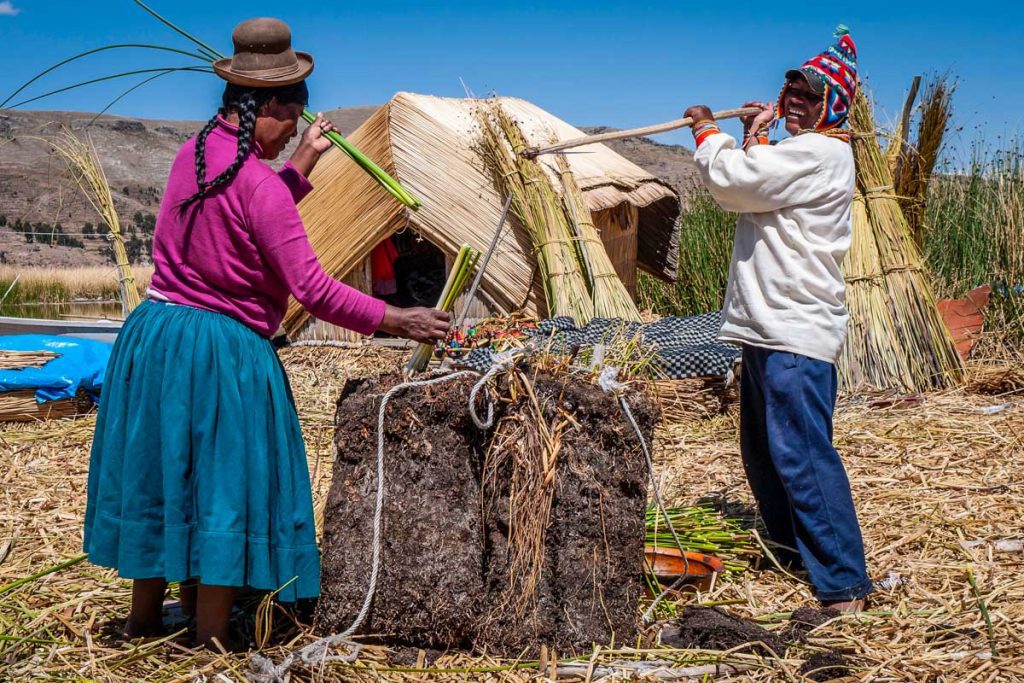
Straddling the border between Peru and Bolivia, Lake Titicaca is the largest lake in South America and also the highest navigable body of water in the world!
To visit the lake on the Peruvian side, you’ll want to make your way to Puno, the main city on the lakeshore. This will be your jumping-off point for discovering the wondrous floating islands.
The Uros Islands are floating on the Peruvian side of Lake Titicaca, just a 30-minute boat ride from Puno. The islands are said to have been closer to the center of the lake at one point, but were relocated much closer to shore after a devastating storm in 1986.
Built from straw-like plants that grow in abundance on the lake, these floating islands are home to the indigenous Uros people who’ve kept up their cultural traditions pre-dating the Inca.
A tour to the Uros Islands is one of the best ways to learn about the unique culture, history and traditions.
15. Trek to Laguna Humantay
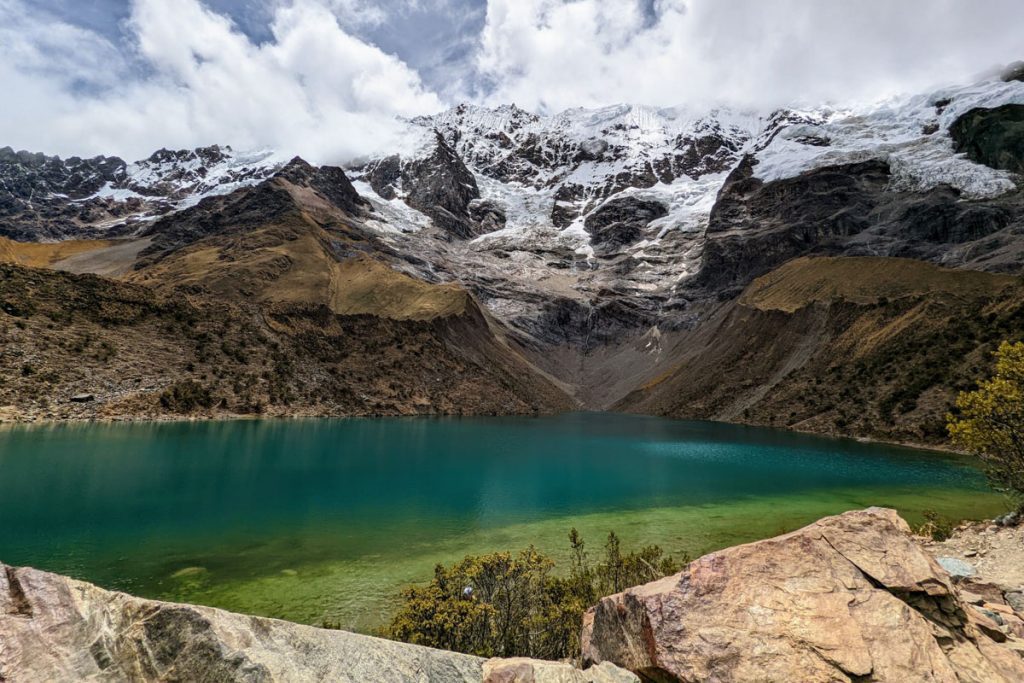
One of the most beautiful alpine lakes you’ve ever seen, the shocking blue waters of the Laguna Humantay backed by the snow-capped peaks of the Humantay Mountains look like they are out of a painting.
The good news is, it’s easy to visit this pristine masterpiece on a day trip from Cusco. There are 1-, 2-, 3-, and even 4-day treks to Laguna Humantay offered by all of the local tour companies around town.
The trailhead for the lake is located in Mollepata, about a 3-hour drive from Cusco. The trail itself is just 4 miles, but with an elevation gain of 1,500 feet… talk about a thigh-burner!
The day trip from Cusco will take a full day due to the 3 hour drive there and back. Also you should note that you will absolutely be sharing the trail with other visitors as Humantay Lake is no secret.
16. Marvel at the Maras Salt Mines
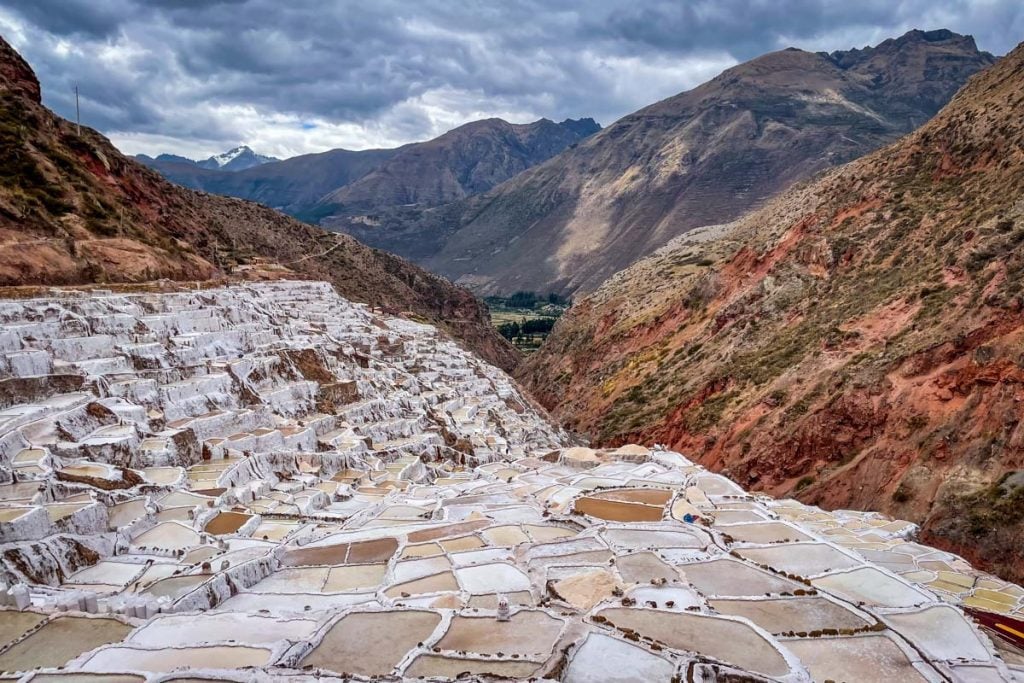
Just an hour outside of Cusco in the Sacred Valley lies a town called Mares. This tiny town is famous for the Maras Salt Mines, or Las Salineras de Maras as they are known in Spanish.
The mines are made up of thousands of individual salt pools nestled into the hillside which have been operational since pre-Inca times.
In a beautiful example of community cooperation, each of the individual salt ponds are owned and operated by farmers in the Maras community. Their efforts are pooled as a cooperative, making the Maras Salt Mines one of the top 10 largest in the world.
The simplicity of using the evaporation method in the salt ponds is nothing compared to the intricacy and sophistication of the ancient irrigation system, which is fed by a single subterranean spring and channeled into the 6,000+ terraced pools.
Important Note: As of 2019, entrance to the mines has been restricted. (The downside of tourism: the influx of tourists walking through the fully operational mines increased contaminants such as hair, trash and cigarette butts – yuck!) You can still see the salt pools from various viewpoints above where you can get plenty of photos without disturbing the mines.
Afterwards be sure to peruse the souvenir shops and buy all the salt products you can think of! The profits from these sales help the Maras community keep the salt mines operational.
To get there, take a colectivo from Cusco to Mares for about $2 USD or a taxi directly to the Mines for about $5. As with all colectivos, they take off from the main station in Cusco and will not depart until the bus is completely full.
17. Climb to the Temple of the Sun in Ollantaytambo
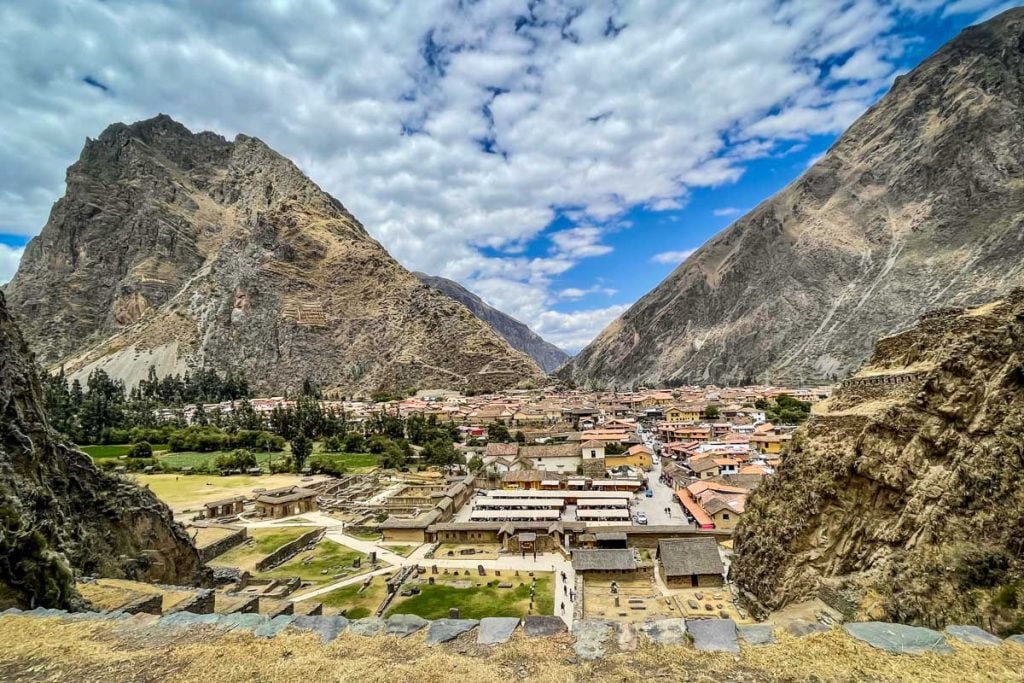
The town of Ollantaytambo on the western edge of the Sacred Valley is best known for the impressive ruins that stand, climbing the hillside overlooking the modern plaza.
At the top of the ruins, above the agricultural terraces and a few flights of ancient steps, sits the Temple of the Sun. As sun worshipers, they believed that because the temple was built on higher ground, they were closer to the gods and could reap more of the sacrificial benefits.
What makes it so interesting is that its construction is quite the opposite of everything surrounding it.
The perfectly shaped red porphyry stones stand out due to their clean edges and straight sides. More mysteriously, the quarry site where the Inca got the rocks is over four miles away, across a valley on the other side of the mountain. The way they transported the rocks remains a mystery.
This fascinating archaeological site is one of the main highlights while exploring the rest of the Ollantaytambo ruins. A guided tour is highly recommended to understand the intricacies of the site.
Afterwards, immerse yourself in the lives of the indengenous Quechua people as you explore the rest of the unique town.
18. Take a cooking class or food tour
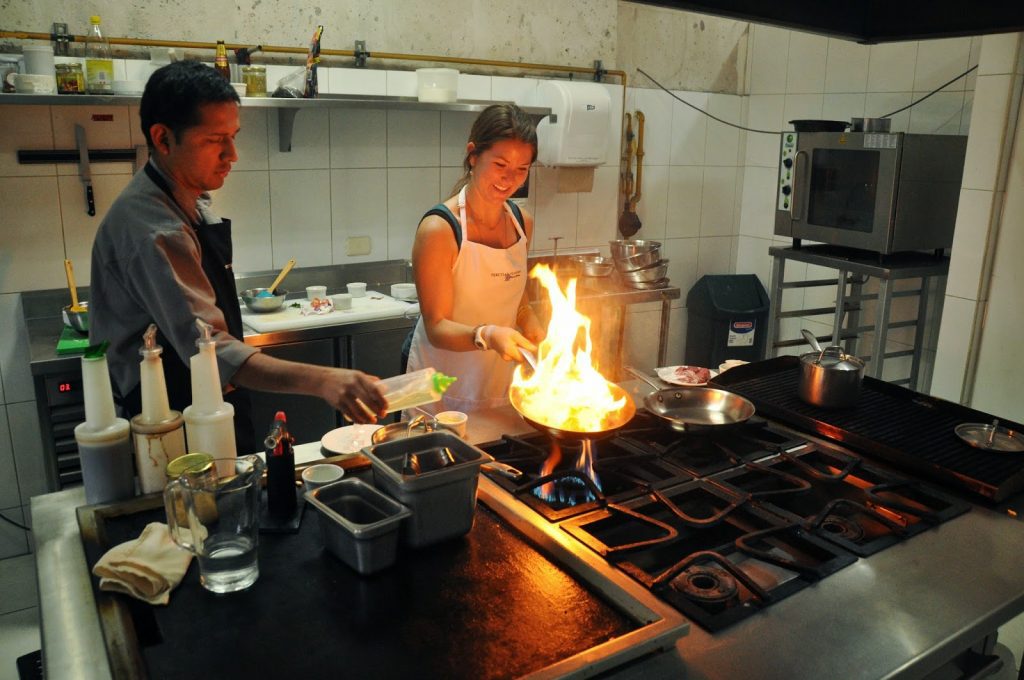
From the world-class gastronomic scene in Lima to traditional Peruvian classics and modern fusion, served all over the country, Peru is a food destination.
Eating our way through Peruvian food was one of our favorite things to do in Peru and it might just be the highlight of your time spent here as well.
Embark on a food tour in your favorite city to get the local’s take on the best food, or try your hand at cooking a Peruvian dish or two in a cooking class.
We took a Peruvian cooking class while in Arequipa and still reference the recipes we learned how to make – Lomo Saltado and Ceviche.
19. Taste all the pisco

You’ve probably heard of a Pisco Sour at some point on your travels throughout South America. Pisco is a type of white grape brandy that is renowned in the country—it’s even considered Peru’s national drink.
There will be ample opportunities to try different varieties of pisco and pisco drinks while traveling throughout Peru.
You can hit up a distillery for an official tasting just outside of Huacachina in the city of Ica, known as the best region for growing pisco in all of Peru.
Otherwise you can take yourself on a pisco tour and try to find the best pisco sour in each city.
20. Spend the night suspended on the side of a cliff
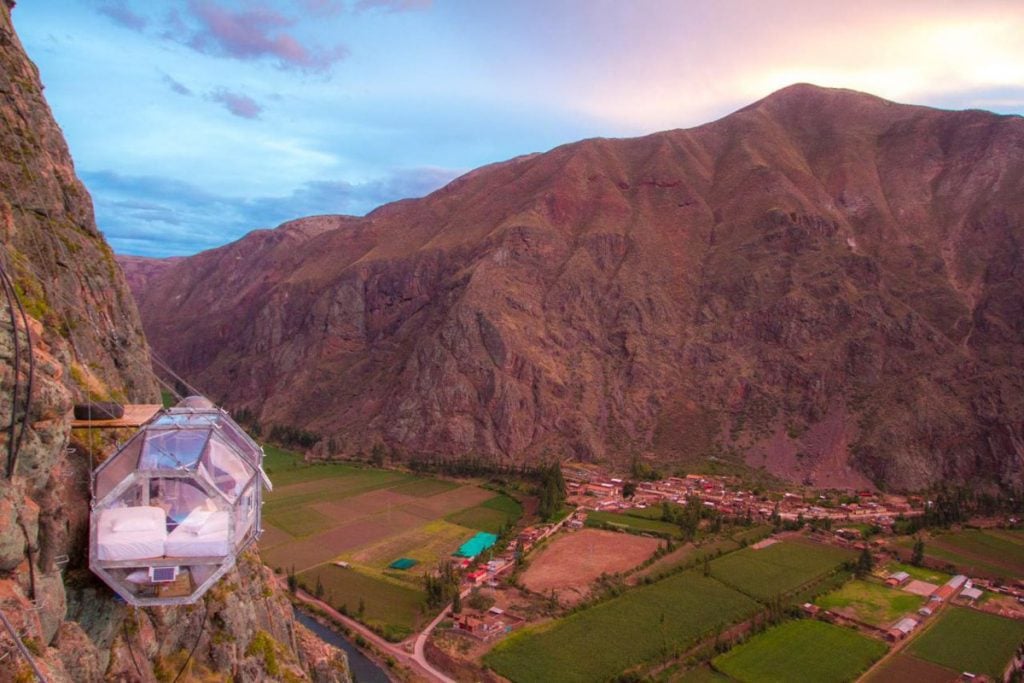
If you’re the type of person who likes to live life on the edge, literally, this one’s for you…
Bring yourself to the edge of your comfort zone by spending the night suspended in mid-air in a glass capsule hanging off the edge of the cliff. SkyLodge Adventure Suites boasts the world’s first sky-high hanging lodge where you can take in the beauty of the Sacred Valley from a birds-eye view.
These octagonal capsules are made of aerospace grade materials, making them completely safe and weather resistant. You’ll just have to brave the climb (or strenuous hike) to reach them!
Once inside the capsule, you’ll have all the creature comforts you could want to make your stay deep in nature feel the most luxurious: a double-bed, bathroom, and lounging area. Your stay includes breakfast and dinner made fresh, delivered by professional climbers directly to your pod.
A stay in these extreme pods will set you back a pretty penny, but the experience has great reviews with a 9.9 rating on Booking.com.
21. Ride a luxury overnight train through the Andes
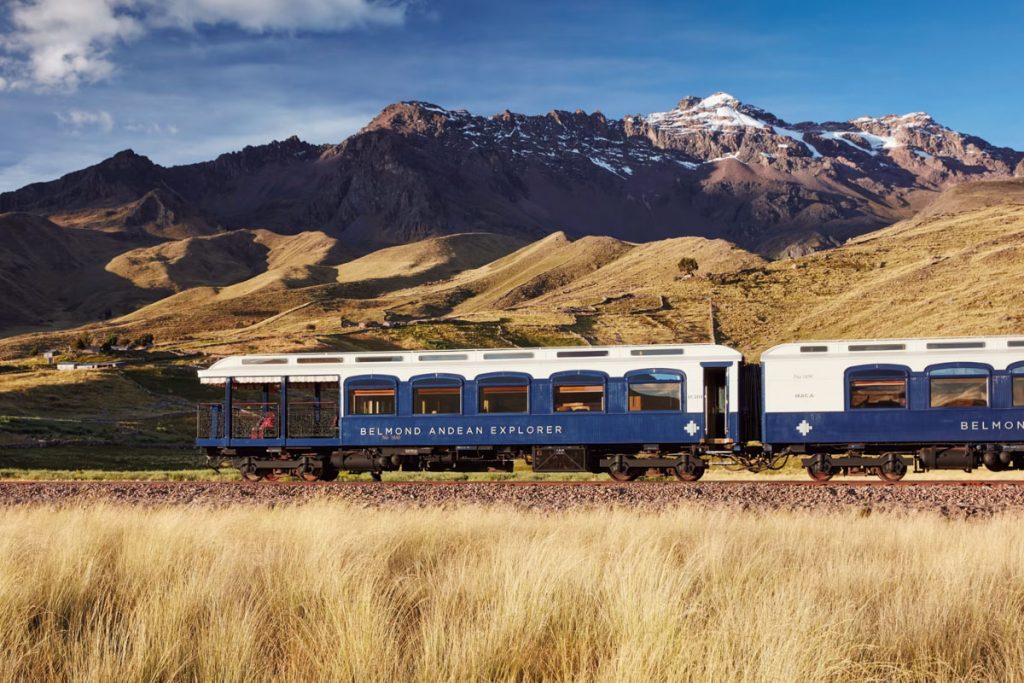
Imagine marveling at the landscape as you taste top-rate Peruvian cuisine and participating in indulging spa rituals between curated tours of memorable Peruvian destinations. As South America’s first luxury sleeper train, the Belmond Andean Explorer wants you to embrace slow travel on a vibrant journey through the majestic Andes.
Offering 1 and 2-night journeys between their bases in Cusco, Puno and Arequipa, the Andean Explorer is certainly not the cheapest way to get from place to place, but the experience is once in a lifetime.
The splurge includes luxury accommodation onboard the sleeper train, all meals, beverages, and entertainment onboard, plus curated excursions specific to each itinerary.
How many days do you need in Peru?
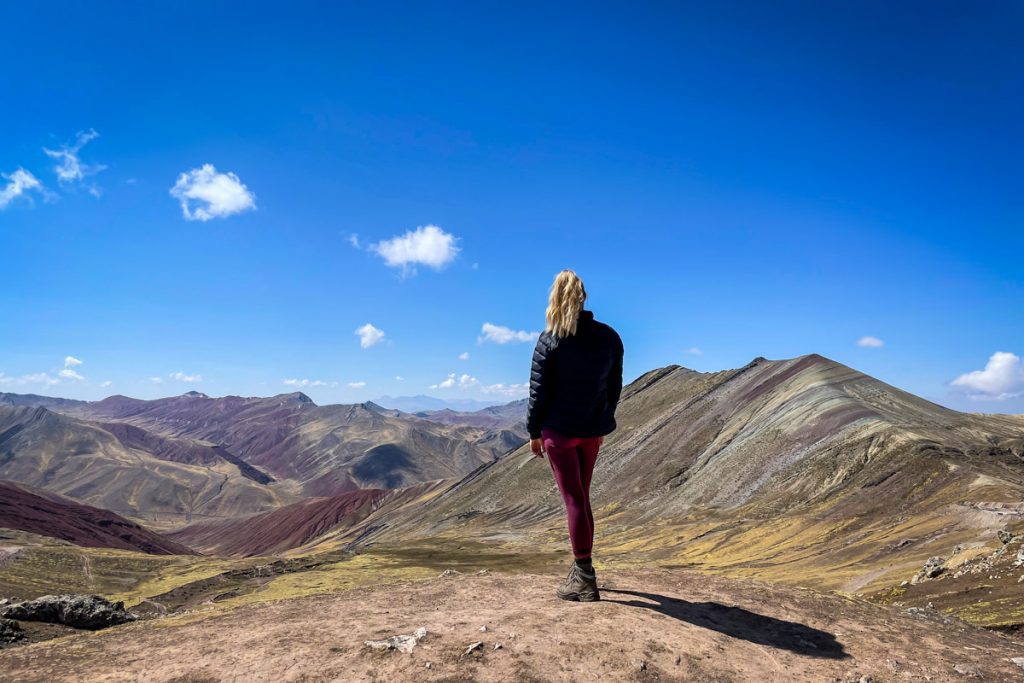
The ideal duration for a trip to Peru can vary widely based on your interests and the specific places you want to visit. Here’s a general breakdown:
- Machu Picchu: If you’re mainly interested in visiting Machu Picchu*, you can plan for a 3-4 day trip. This includes a day to travel to Aguas Calientes (the town closest to Machu Picchu), a day to visit Machu Picchu itself, and a day to return.
- *If you want to hike the Inca Trail, we recommend spending a minimum of 2-4 days in Cusco to get acclimated to the altitude before your 1-, 2-, or 4-day trek.
- Cusco: If you want to explore more of the Cusco and the Sacred Valley region, add at least 3-5 days to your trip. This allows time to acclimate to the altitude, explore the city of Cusco, and visit nearby attractions in the Sacred Valley.
- Amazon Rainforest: For those interested in the Amazon rainforest, plan for 3-5 days or more, depending on how immersive you want the experience to be. This includes travel time to and from the rainforest, as well as activities like wildlife spotting, jungle treks, and cultural experiences with indigenous communities.
- Lima: If you also want to visit Lima, Peru’s capital, add another 2-3 days to your itinerary. This allows time to explore the city’s historical sites, museums, and culinary scene.
Overall, a well-rounded trip to Peru typically lasts around 7-14 days. However, if you have specific interests or limited time, you can tailor your itinerary accordingly.
Best time to visit Peru
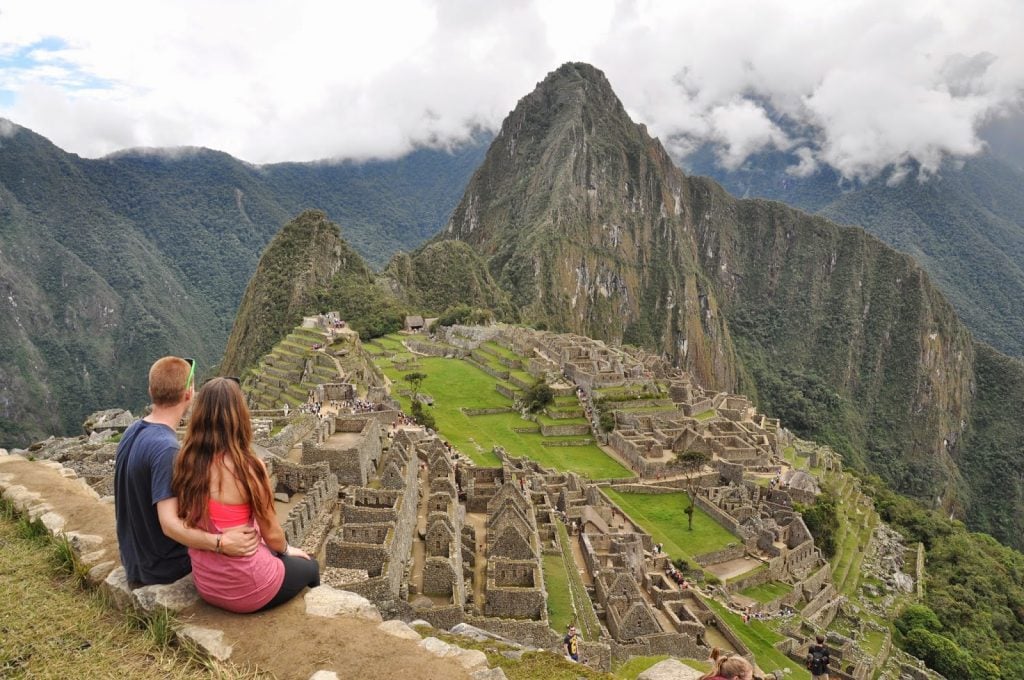
In a country with so many micro-climates, the best time to go ultimately depends on the duration of your visit and your specific interests.
May though September is generally the best time to visit Peru, especially if you’re planning activities like visiting Machu Picchu in the Andes (which we wholeheartedly recommend!).
For an in-depth guide on the seasonal weather patterns and other factors, check out our complete guide on the best time to visit Peru.
What to pack for visiting Peru
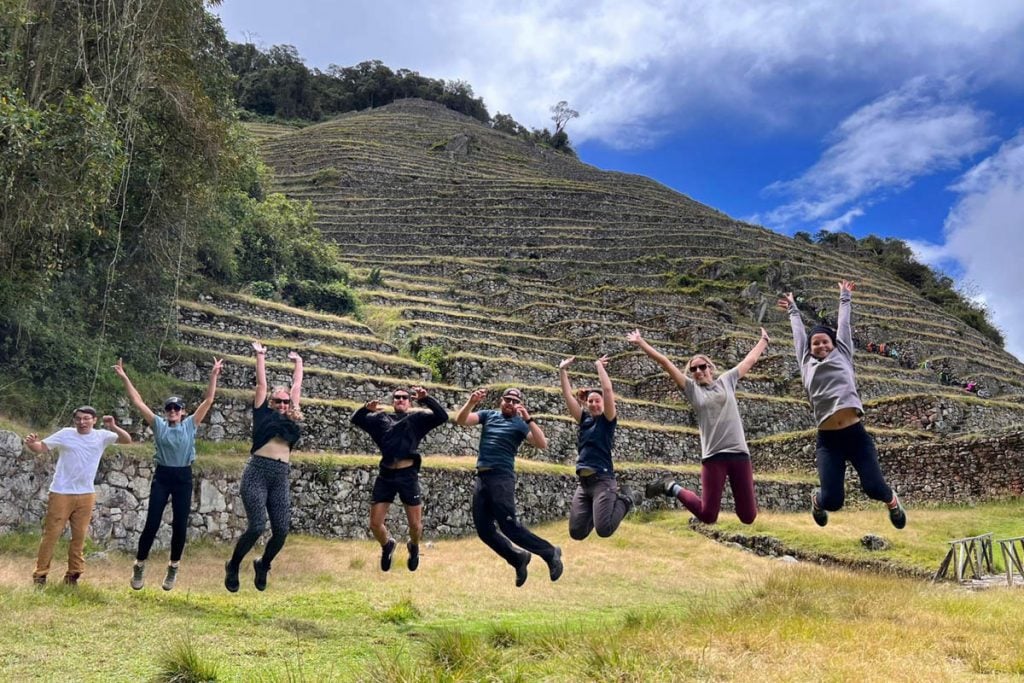
It can be pretty confusing and complicated to pack for Peru. With its hot coastal beaches, temperate capital city, wet Amazon forest, and cold Andean highlands, Peru is one destination with a lot of microclimates!
Here are some Peru-specific items we’d recommend packing:
- bug repellant (solids are the way to go)
- reef safe sunscreen
- insulated water bottle
- reusable straw & reusable bag (say no to single-use plastic!)
- sporty, versatile, and comfortable layers
- shoes (athletic or hiking boots)
- rain jacket
- scarf and a warm beanie
- swimwear
Round up of best things to do in Peru
Here’s a recap of all the best things to do in Iceland so you can see everything in one place.
- Inca Trail to Machu Picchu
- Cordillera Blanca
- Colca Canyon
- Arequipa
- Palccoyo Rainbow Mountain
- Cusco
- Huacachina
- Lima
- Sacred Valley
- Mancora
- Amazon Jungle
- Ballestas Islands
- Nazca Lines
- Floating islands at Lake Titicaca
- Laguna Humantay
- Maras Salt Mines
- Ollantaytambo
- Cooking class or food tour
- Taste Pisco
- SkyLodge Adventure Suites
- Belmond Andean Explorer
Are you planning a trip to Peru?
We have lots of resources on travel in Peru and destinations throughout the country. Check out our Complete Peru Travel Guide for all the answers to your most burning questions, or read some of our favorite articles below.
- How to Get to Machu Picchu: Guide to Visiting
- How to Get from Lima to Cusco
- Adventurous Things to Do in Cusco
- Hiking the Inca Trail to Machu Picchu
Save this article on Pinterest for later!
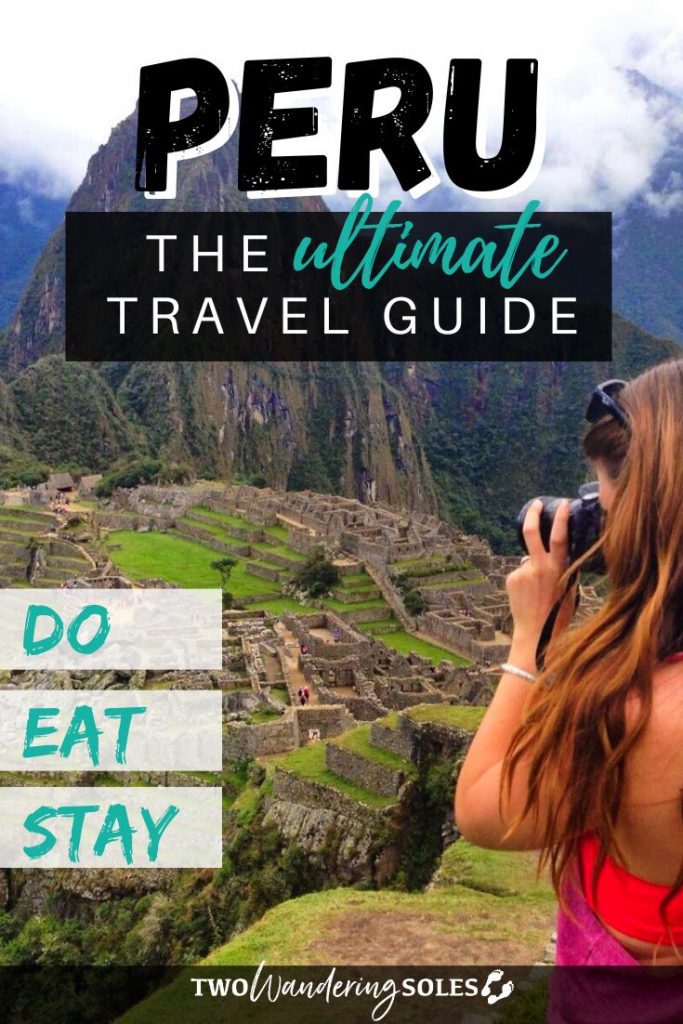
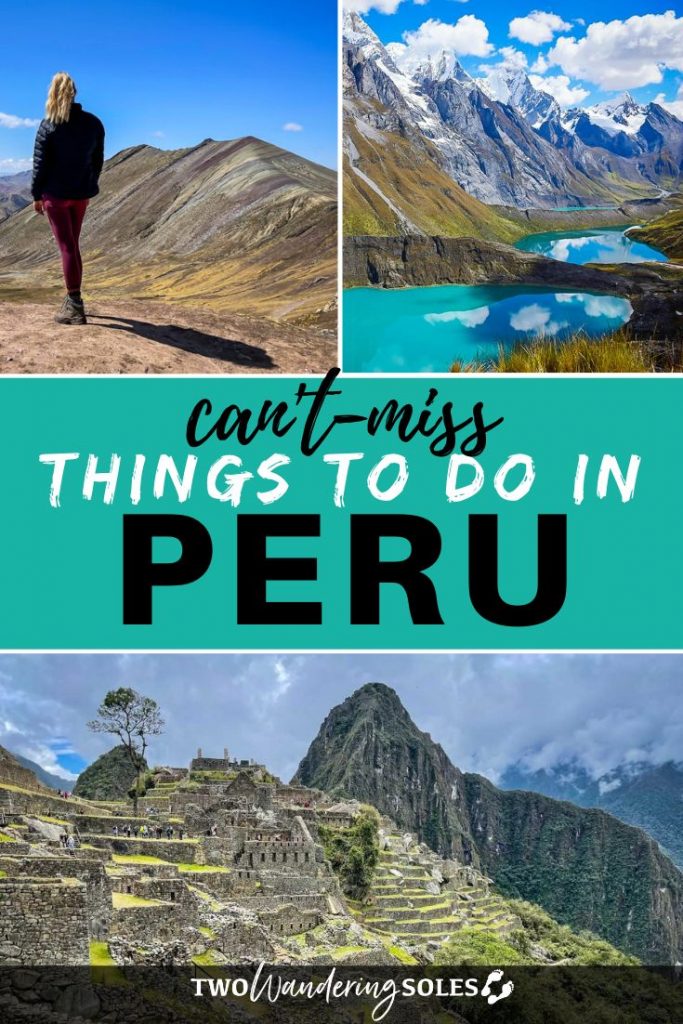
We want to hear from you!
Which of these things to do in Peru is going on your bucket list? Do you have more questions about visiting Peru for the first time? Leave your comment below and we’ll do our best to get back to you!

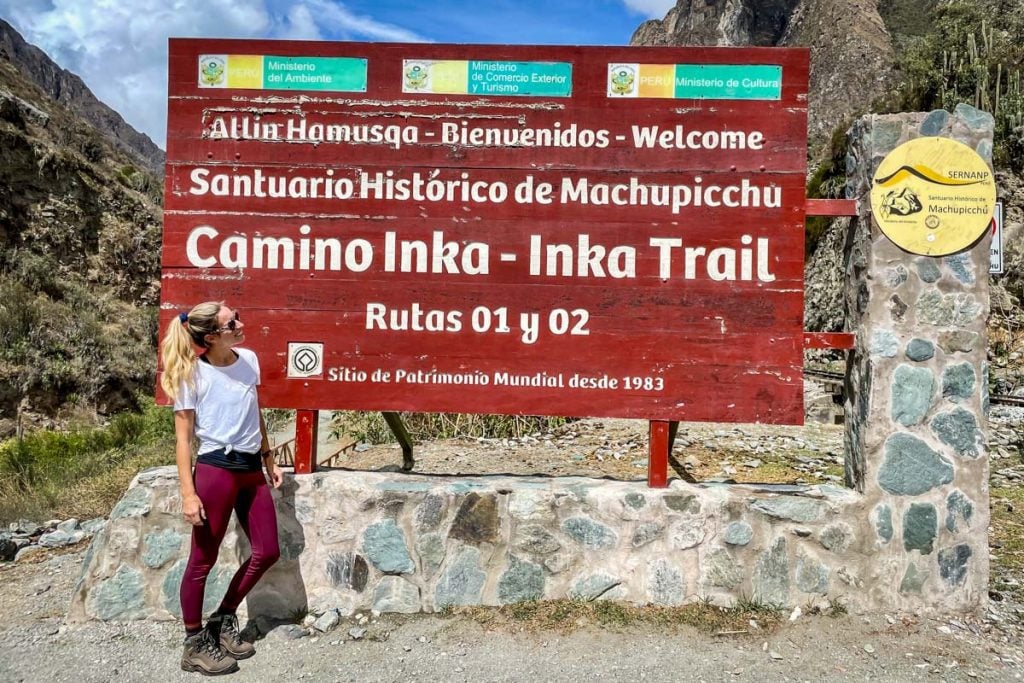
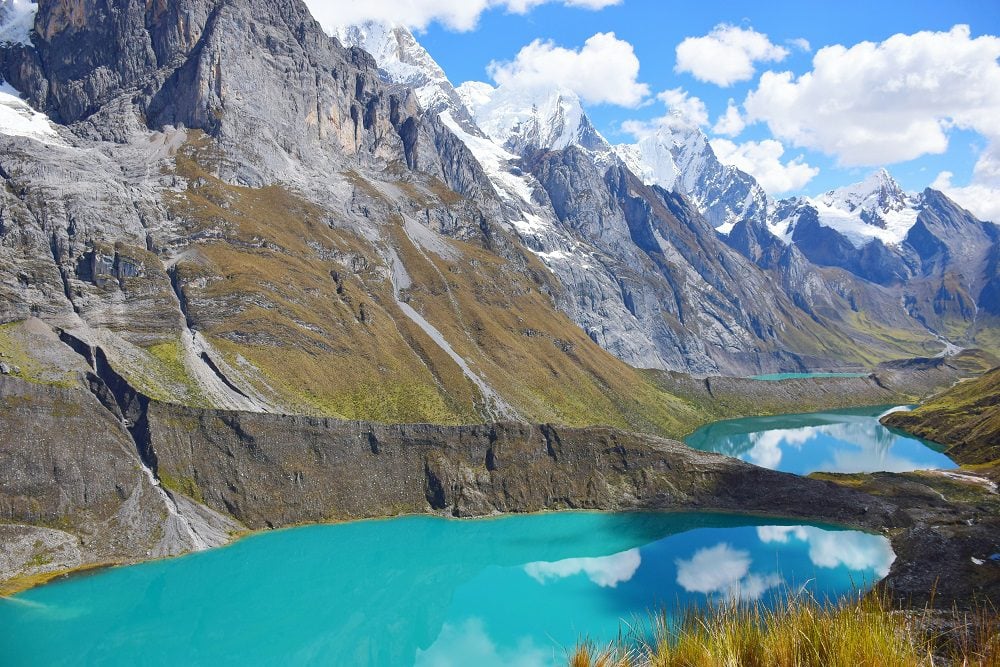
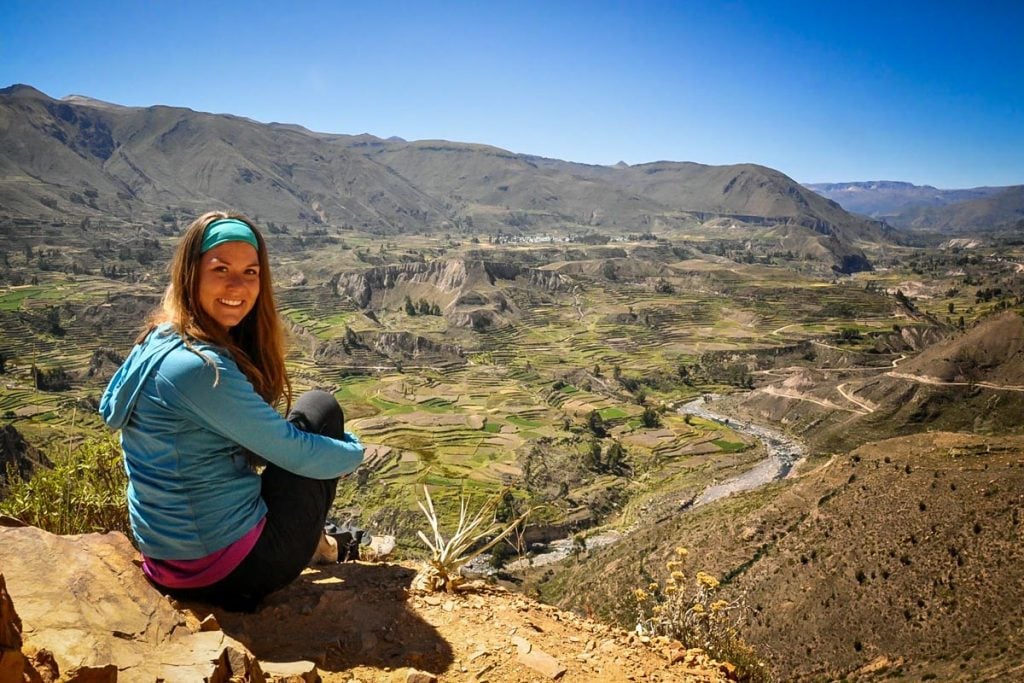
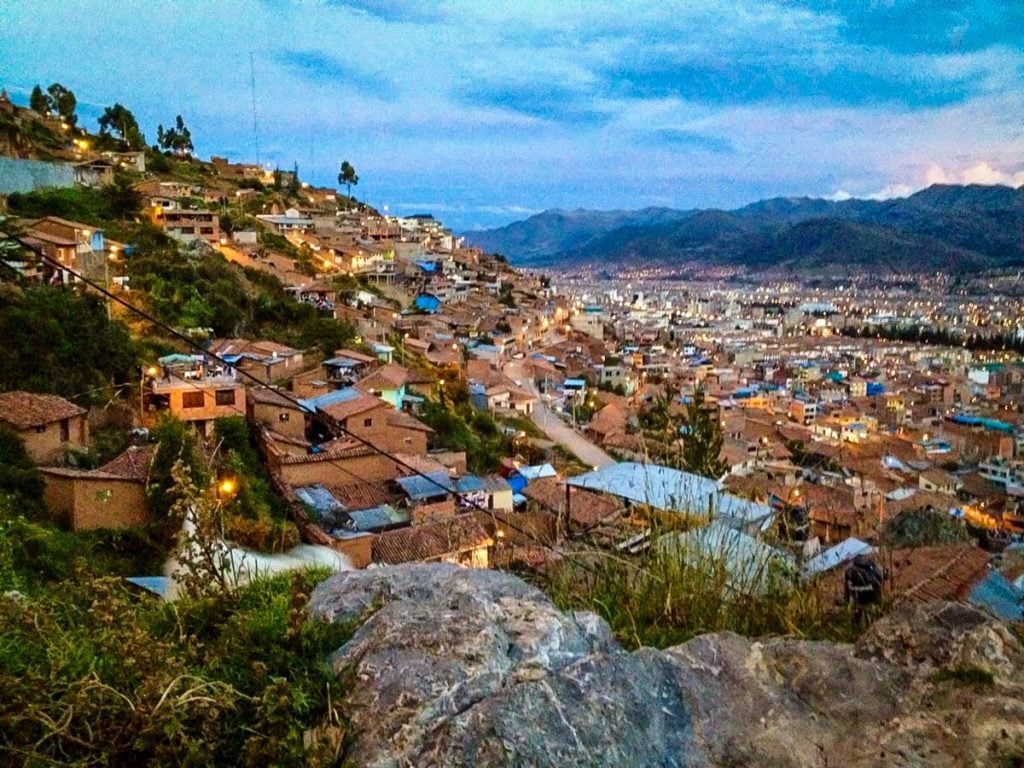
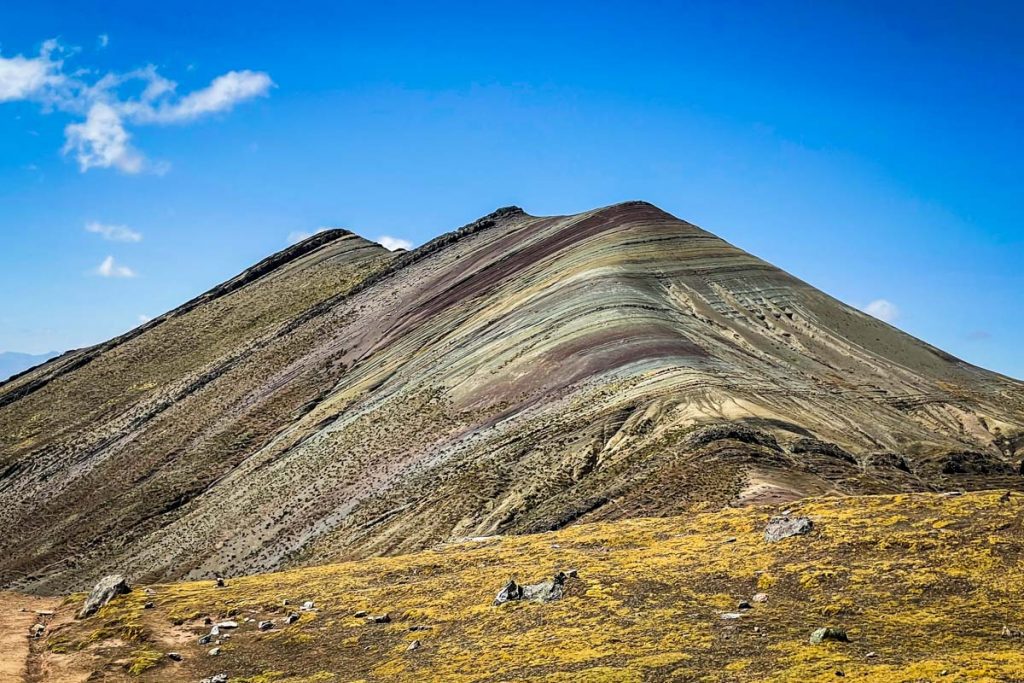
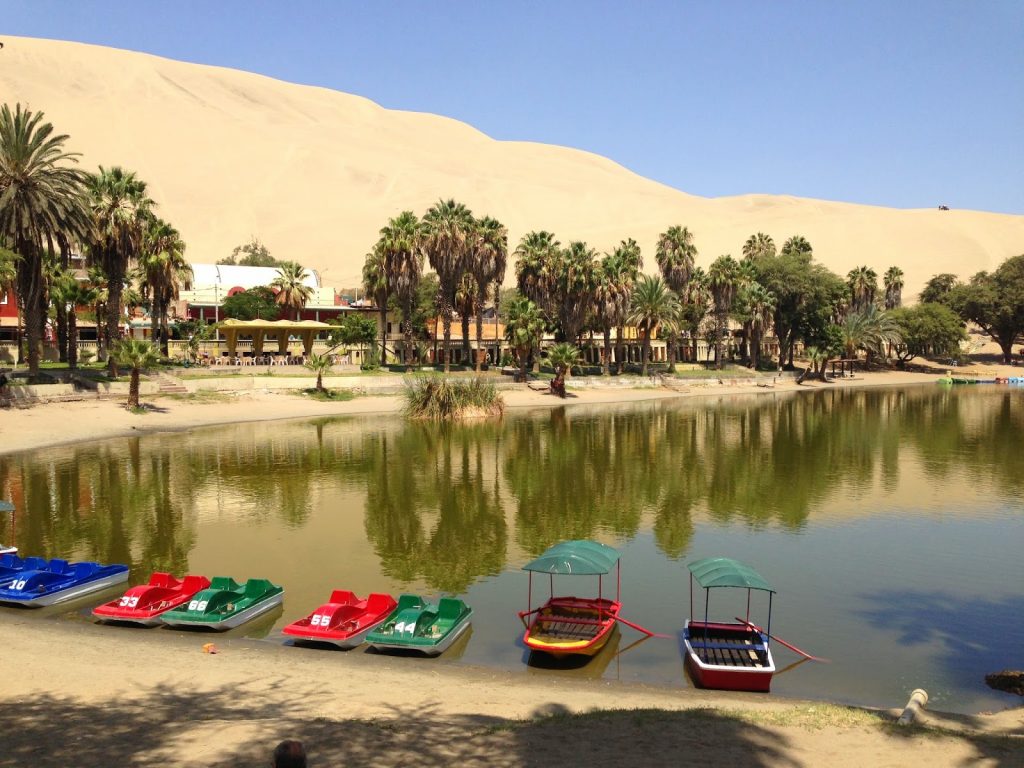
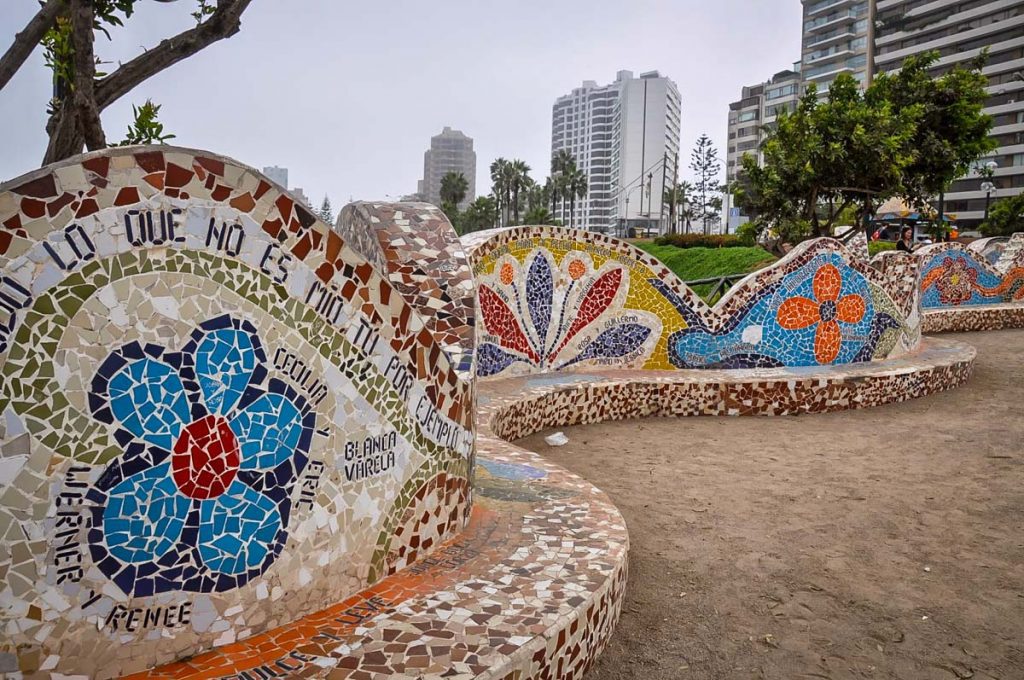
Thanks for all your tips guys!!!!
I hope, I would get a chance to explore all these miracles one day.